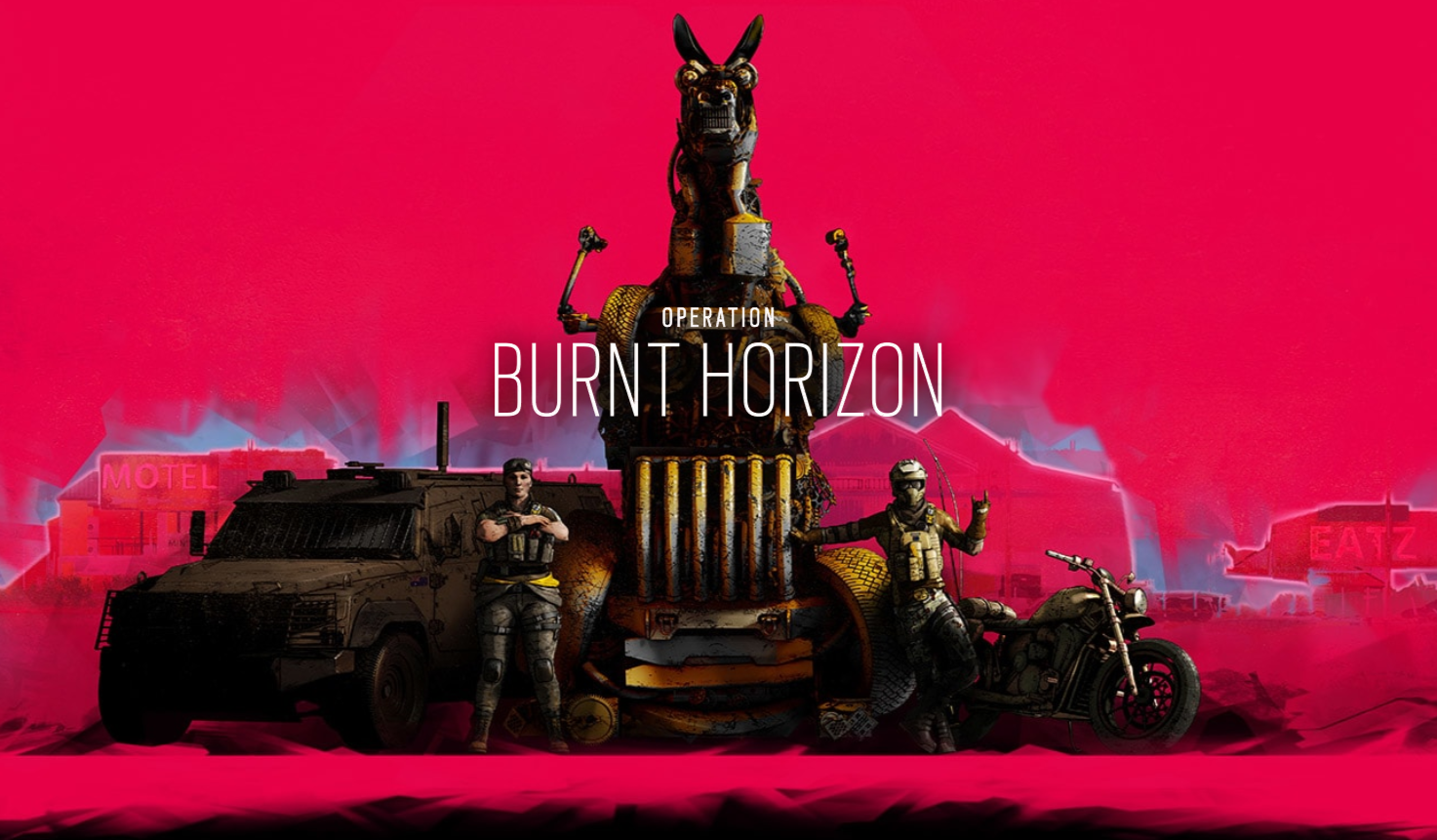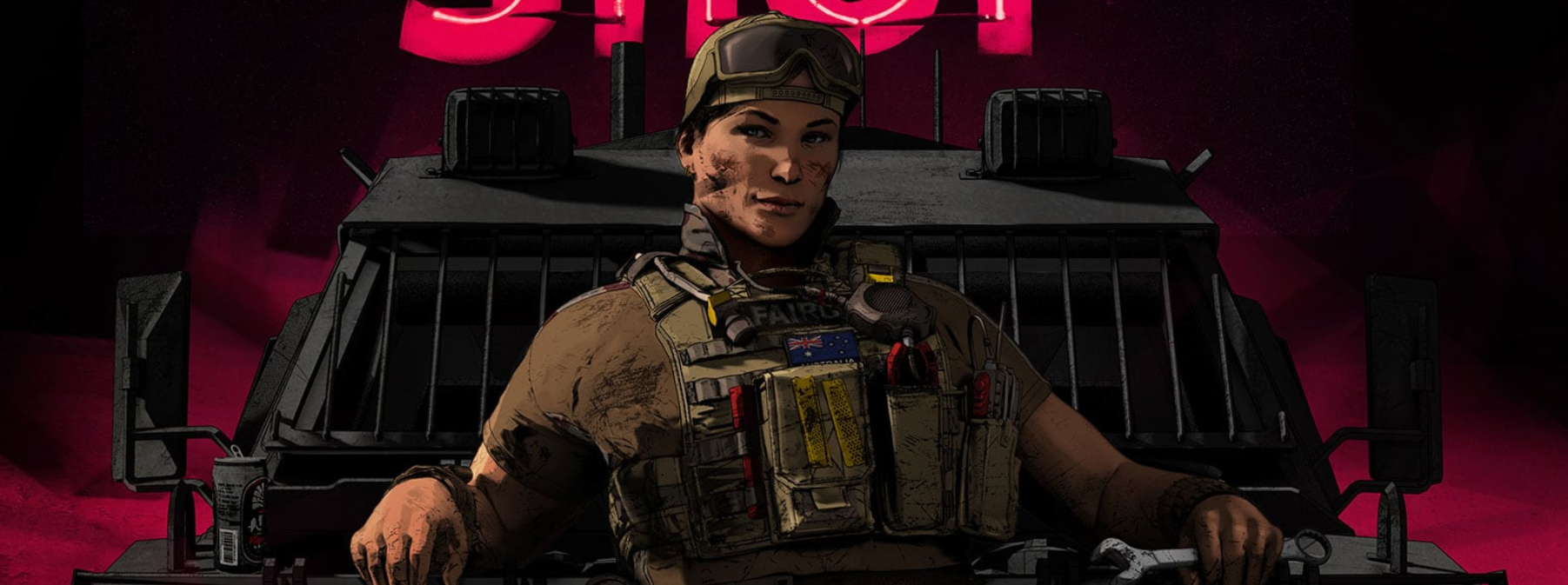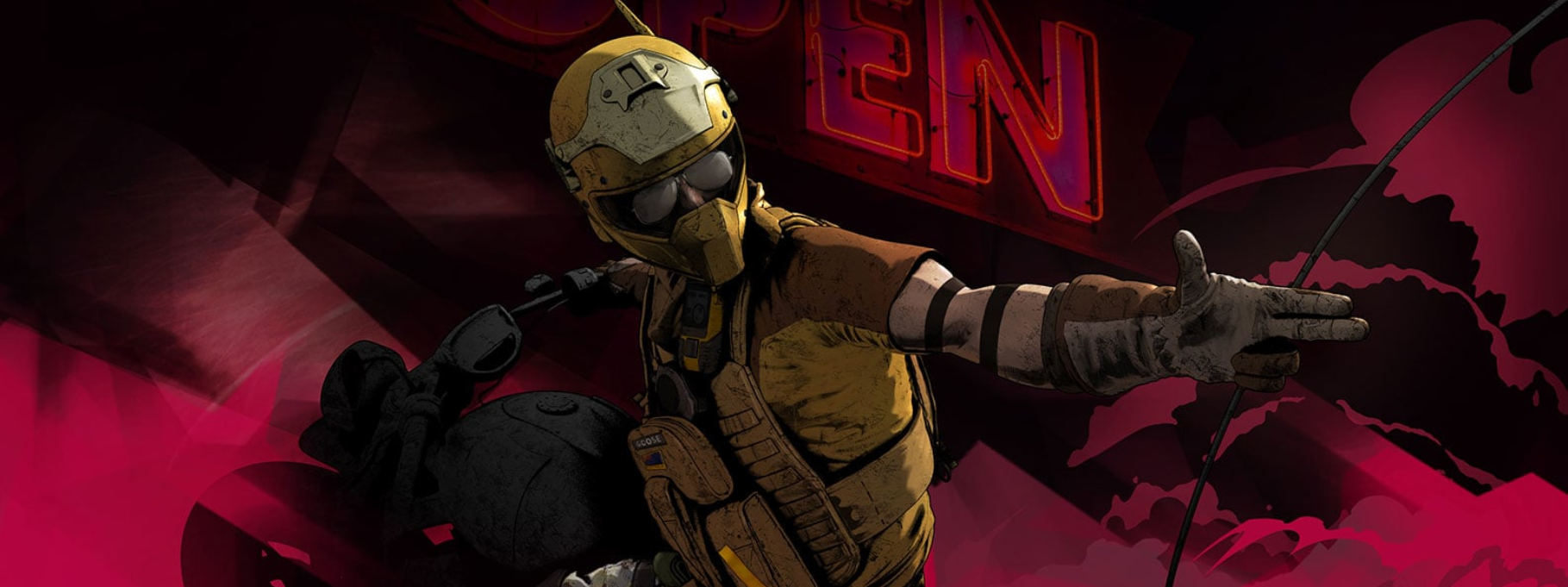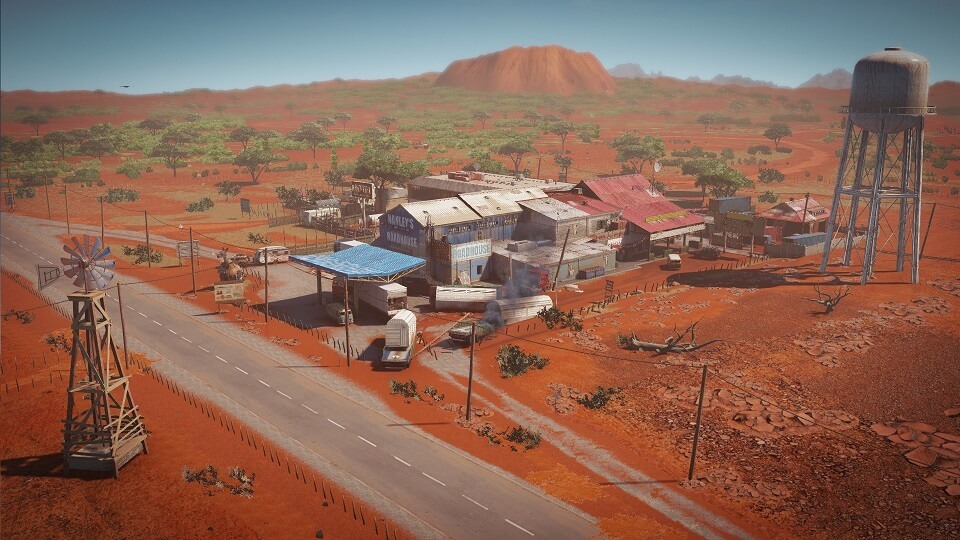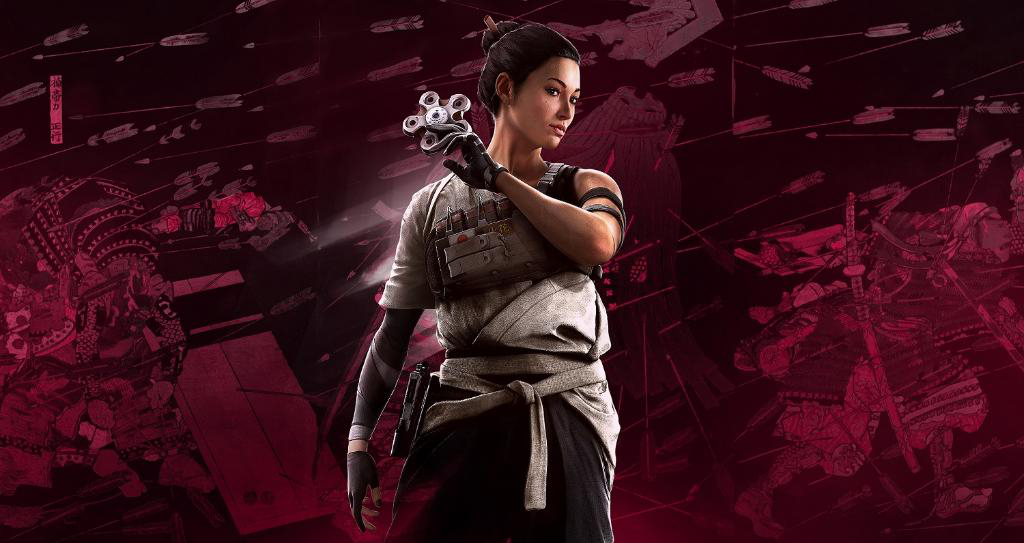
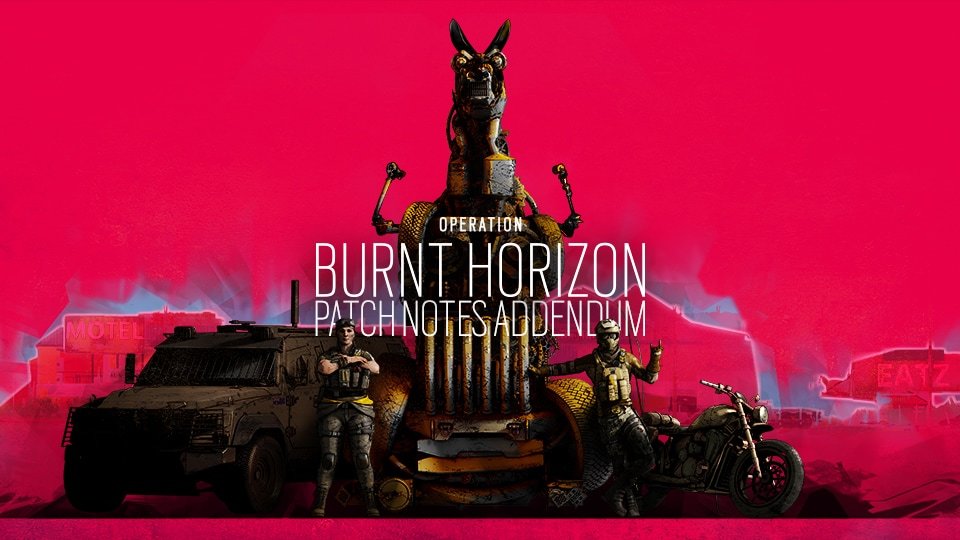
We’ve made a number of changes and updates over the course of the Burnt Horizon Season Test Server. Below you will find a list of changes and updates.
To help optimize player experience for future updates, we are also in the process of restructuring how our game data is stored – this will help consolidate and reduce the overall game size. This means that the Burnt Horizon Patch will be larger than normal. Patch sizes for each platform will be provided prior to maintenance.
- Previous camera placement at a full lean allowed players to fire without being completely exposed. As part of our fix to counteract lean spamming, we are shifting the camera to the center of the head instead of the far side of the head, even when at a “full lean”.

- With Y4S1, we have cleaned up the animations in the back end, and streamlined them. This will allow us more freedom to implement new features and unique aspects of the game in the future, as the overall animation development pipeline has been streamlined. We have also updated the new running animations based on the player feedback we received so that the head lean is less aggressive to make the sprint animation look more natural.
- Minimum Clearance Level for Ranked Playlist increased from 20 to 30.
- Reduction in HP after being revived from a DBNO state: PvP = 20 (down from 50), THunt = 15.
- Holosight color is now determined by the base skin of the weapon it is equipped on.
- Back to Wind Bastion version.
DOKKAEBI
- Auto – hangup timer of Dokkaebi calls reduced to 12 seconds (down from 18).
- Fixed – When prone, moving/turning the camera even slightly will cause the Operator to make noise.
- This problem is tied to the shield operator rotation fix for Y4S1, so we're reverting back to the old rotation system for the time being.
- Fixed – Incorrect kill feed Death Icon.
- Fixed – Attacker's still receive electric damage even after leaving electrified reinforced walls.
- Fixed – Defenders are not being affected by Mute's Jammer when prone (players not registered as being within the AOE buff, blue indicator missing, cleanse not in effect).
- Fixed – Attackers can control a drone if they deploy a drone while being injured at the same time.
- Fixed – Transition animation from prone to sprint is almost instantaneous (the worm).
- Fixed – Moving while prone and leaning produces no sound.
- Fixed – Deploy and pick up animations are broken for the shield operators in 1st and 3rd person when using the breach charge.
- Fixed – Shield clipping when a shielded operator reload while aiming down at the ground.
- Fixed – Defenders pushed back by Nomad's Airjab into Gridlock's Trax Stingers destroy them without taking any damage.
- Fixed – Gridlock's Trax Stingers sometimes don't deploy.
- Fixed – Gridlock's M249 SAW contains an extra bullet.
- Fixed – Gridlock's F90 reload animation restarts if the reload animation is interrupted
- Fixed – Pest is unusable if deployed on Mute's Jammer.
- Fixed – Pest can hack drones through single bullet holes on single layered destroyable surfaces.
- Fixed – Alibi's hologram still appears even when an Attacking Operator is moving through/on top of the gadget while in prone.
- Fixed – Fire rate of Buck and Blackbeard's DMR in PVE are too low.
- Fixed – Fire rate on Caveira’s Luison is lower than intended.
- Fixed – Barbed wire is being electrified when vertically outside of the active radius of Kaid's Rtila.
- Fixed – Ying’s Burnt Horizon headgear model collapses her character model.
- Fixed – When sprinting, IQ keeps her gadget up to her face.
- Fixed – Popping animation when IQ is prone and leaning with her gadget.
- Fixed – Leaning with IQ's gadget while rappelling is not replicated from a third person POV on her model.
- Fixed – Various level of detail fixes across maps.
- Fixed – Sound does not propagate through a section of the floor in 2F office in Outback.
- Fixed – Players can vault onto the fridge in 1F Convenience Store in Outback.
- Fixed – Pixel line of sight in Compressor of Outback.
- Fixed – Players can get stuck inside a barrel after vaulting the fence in EXT Storage Yard of Outback.
- Fixed – Players can get onto the ceiling tarp in Gear Store in Outback.
- Fixed – Players can plant the defuser on the ceiling tarp in Gear Store in Outback.
- Fixed – Players can vault onto the shelf in 1F Garage in Outback.
- Fixed – Players cannot place barbed wire on 2F Back Stairs of Outback.
- Fixed – Defenders are being detected on the Stairs in 2F Outback.
- Fixed – Defuser can't be planted on the North side of 1F Bushranger room in Outback.
- Fixed – Vaulting inconsistency in Convenience Store in Outback.
- Fixed – Spawn locations are misplaced on the Outback map overview.
- Fixed – Placeholder model can be found in the 4F Cockpit on Yacht.
- Fixed – The black holographic sight takes more space in the screen than the brown one.
- Fixed – Visual issues with some models' eyes + eyelashes.
- Fixed – After cooking a frag grenade until it explodes, the grenade model remains + nearby grenade indicator remains for other players.
- Fixed – Overexposure of items when viewing in the shop/preview when switching between items.
- Fixed – In PvE/custom, hostage can be picked up before the progress bar is full.
- Fixed – Operators missing VO lines in the Article 5 PvE mission.
- Fixed – Character animations freeze in the main menu.
- Fixed – Pistol appears in the hands of an Operator when throwing their Drone.
- Fixed – Holographic sight is sometimes reflective and unusable.
- Fixed – Laser attachment is slightly misaligned with the mod rail for the SASR’s Super Shorty.
- Fixed – FPS Drops.
- Fixed – All skins/uniforms should now be available and correctly skinned/equippable.
- Fixed – The "Ocean's Teeth" Weapon Skin for IQ's 552 Commando is unavailable.
- Fixed – Crocodylus weapon skin missing texture.
- Fixed – Some legacy weapon skins missing for the Primary and Secondary shotgun for SASR ops.
- Fixed – Volcano and some weapon skins apply to the .44 Mag Semi–auto's scope.
- Fixed – Elite Ash Chibi isn't displaying when equipped on Shields.
- Fixed – Minor errors in the loadout description of Hibana's Elite skin.
- Fixed – Spelling error on Mozzie's badge in bio.










